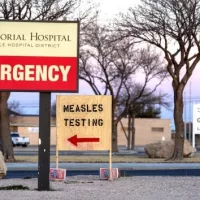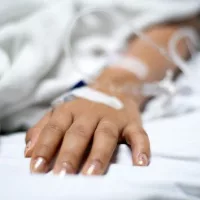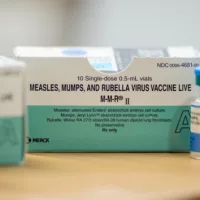
(NEW YORK) — As the daily pace of vaccinations in the United States appears to flatten, health departments are increasingly faced with a tough choice. How do you convince residents to get the vaccine?
For Dr. Jean Stachon, a county health officer and family medicine practitioner in Sweetwater County, Wyoming, the focus on not turning anyone away has occasionally meant that COVID-19 vaccine doses go to waste.
“We’re transitioning from the thought of not wasting a dose to now not wasting an opportunity to vaccinate,” Stachon said.
Over the last few days, the department has wasted between one and three doses.
“We’re trying to keep that to a minimum, but if people want to get vaccinated, not trying to put any hurdles in their way,” she said.
In Sweetwater County, which has a population of roughly 42,000 people, 28% of adults are fully vaccinated, according to the state health department, compared to 34% of adults nationwide.
In order to ramp up vaccine uptake, the Wyoming health department has offered clinics, including one at the local high school, and has counseled residents one-on-one to answer any questions or address concerns they might have about getting vaccinated.
“We’re trying whatever we can do to make it easy,” Stachon said.
“People would have to trip over the public health department to walk around and not get it,” she added. “We’re out there trying, realizing we’re in a community that might rate a little high on resistance. We’re out there chipping away.”
In Winnebago County, Iowa, which has a population of roughly 10,500, about a quarter of residents are fully vaccinated. Winnebago has been getting 200 vaccine doses a week, but after a decline in demand for vaccines, the county asked for fewer doses from the state this week, according to Julie Sorenson, an administrator at Winnebago County Public Health.
“This week we declined half of the doses,” Sorenson said. “Instead of getting 200 for next week, I’m only going to get 100.”
With the low demand, Winnebago is taking a different approach to administering shots. The health department is keeping a running list of people who want to get vaccinated. Once 10 sign up, Sorenson calls them all to come in for shots.
“Once we prick the vial, we have 12 hours to get 10 in arms,” she said.
If someone doesn’t show up, Sorenson calls a name off the wait list, and so far, she’s always been able to find someone to take the vaccine, she said.
Still, hesitancy in the county is a concern.
“It’s probably half and half,” Sorenson said of people who want the vaccine versus those who don’t.
For Dr. James Rudolph, a health officer in Miami County, Indiana, not wasting COVID-19 vaccine doses came down to luck last week.
The state had given the county roughly 600 extra doses and Rudolph had to figure out how to get them into arms. With low demand among the general population, Rudolph turned to a local egg processing factory and was able to run a clinic for employees to get vaccinated. The factory was one of several in the area that he reached out to about the extra doses. The others had already made arrangements for vaccines.
“I think we’re fortunate that we didn’t have to figure out something to do with that vaccine,” he said. “We certainly don’t want to be wasting any.”
Demand for vaccines in Miami County has declined enough that makeshift vaccination sites will close. So far, roughly one in five people in the county is fully vaccinated. Local churches are advertising the vaccines and the county plans to start accepting walk-ins for vaccinations in the near future, Rudolph explained.
There’s been a huge drop-off in demand over the past three weeks, Rudolph noted.
“Now we’re in an area where people are either hesitant about getting vaccinated, especially after the Johnson & Johnson dilemma, or who are just adamant that they’re not going to get vaccinated,” he said.
Copyright © 2021, ABC Audio. All rights reserved.















